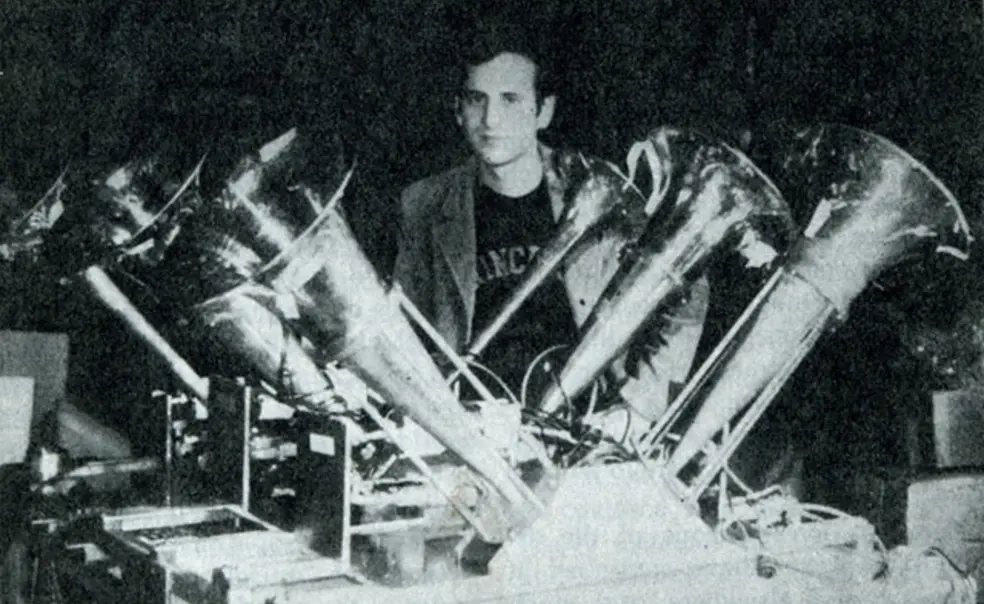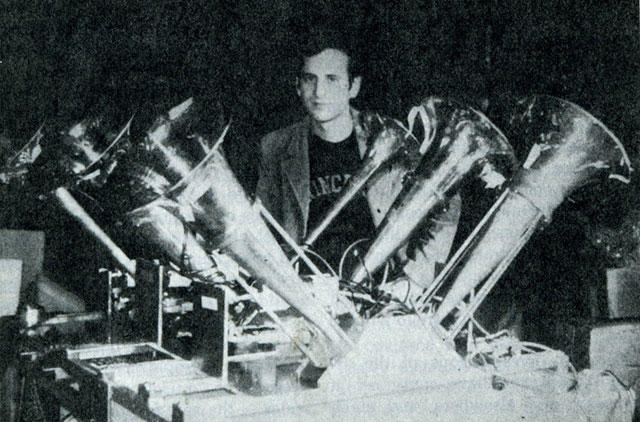#ThrowbackThursday: Cosmology with Brass Bells and Balloons
Princeton has long been a leader in astrophysical sciences — even when the state-of-the-art equipment looked like “the luggage of a touring brass ensemble.” That was J.I. Merritt ’66’s description of Professor David T. Wilkinson’s “balloon package,” pictured below with an unidentified researcher and featured in an Oct. 20, 1980, PAW story, “Cosmology at Princeton.”
Wilkinson and his team would periodically travel to Palestine, Texas, to deploy the instrument on scientific balloons. Flying at a height of 80,000 feet, the package would measure background radiation in space; the six large brass bells served as antennae for a set of Dicke radiometers (created by Princeton physicist Robert Dicke ’39).
Today, cosmic microwave background radiation is studied via spacecraft, including the Wilkinson Microwave Anisotropy Probe (WMAP), which was renamed in Wilkinson’s honor after his death in 2002. Princeton professors Lyman Page Jr. and David Spergel ’80 and colleague Charles Bennett shared the 2010 Shaw Prize in Astronomy for their leadership of the WMAP project.
Photo from the PAW Archives
Follow PAW on Facebook and Twitter to see #ThrowbackThursday posts, alumni news, and more.













No responses yet